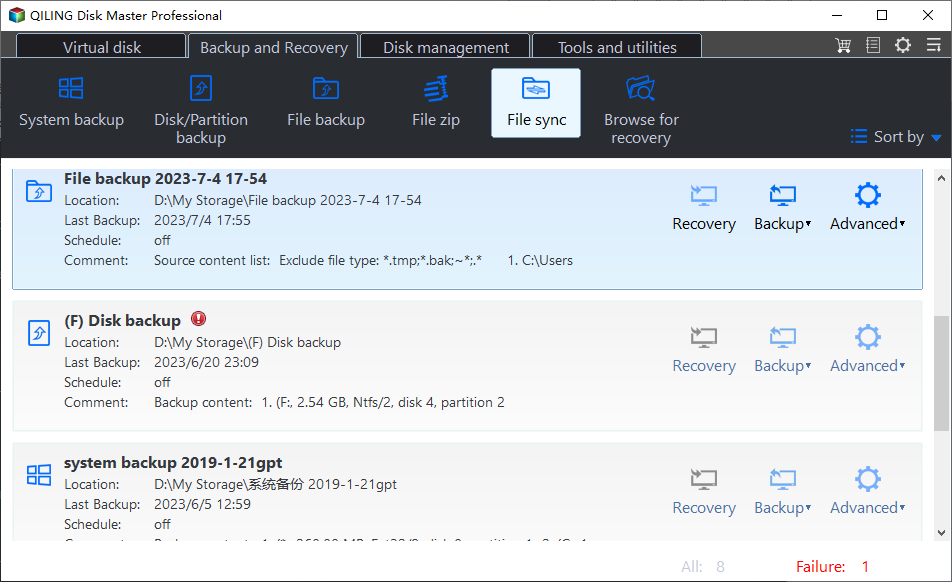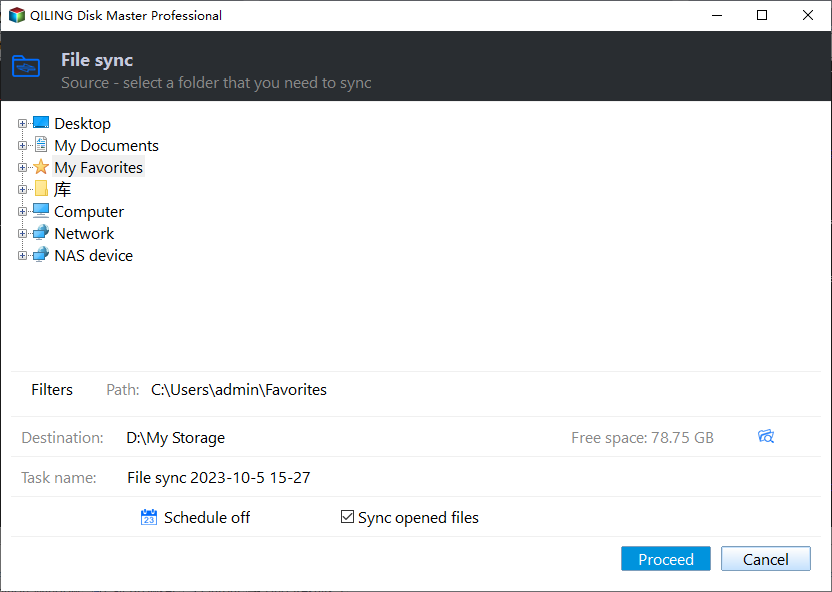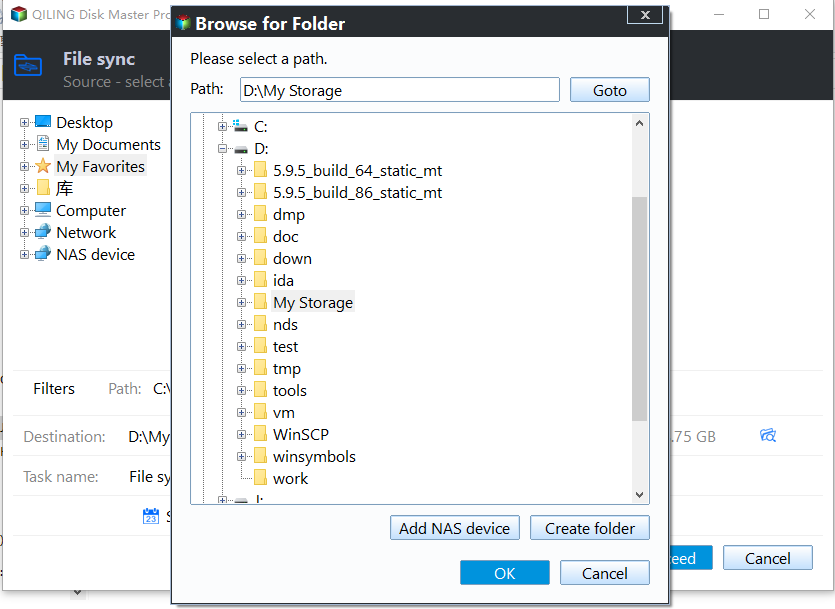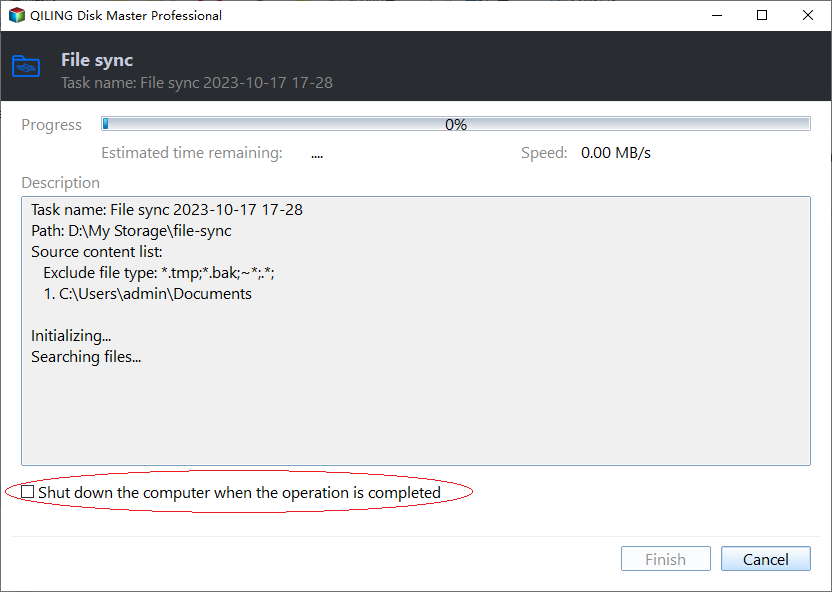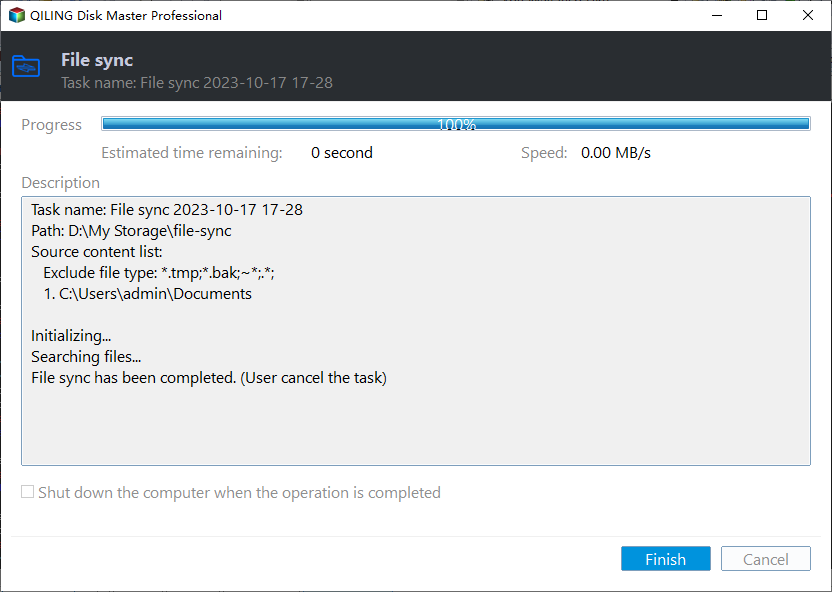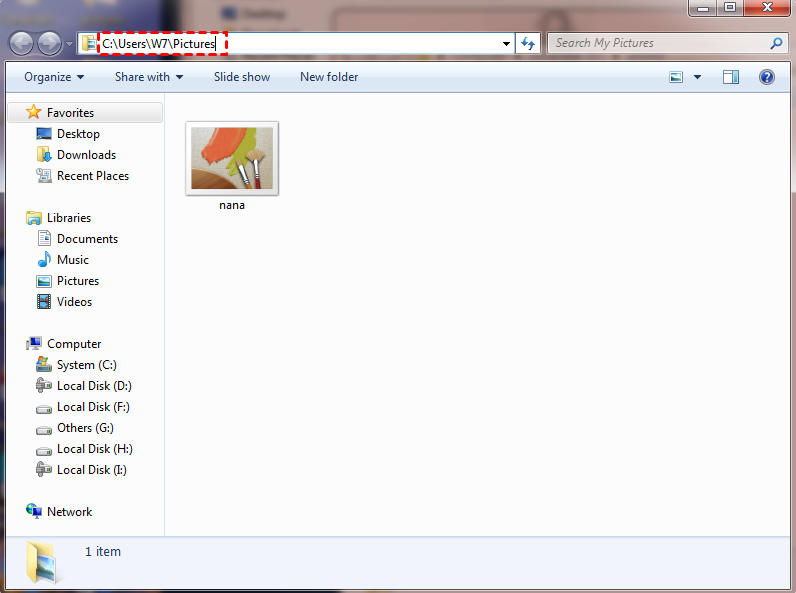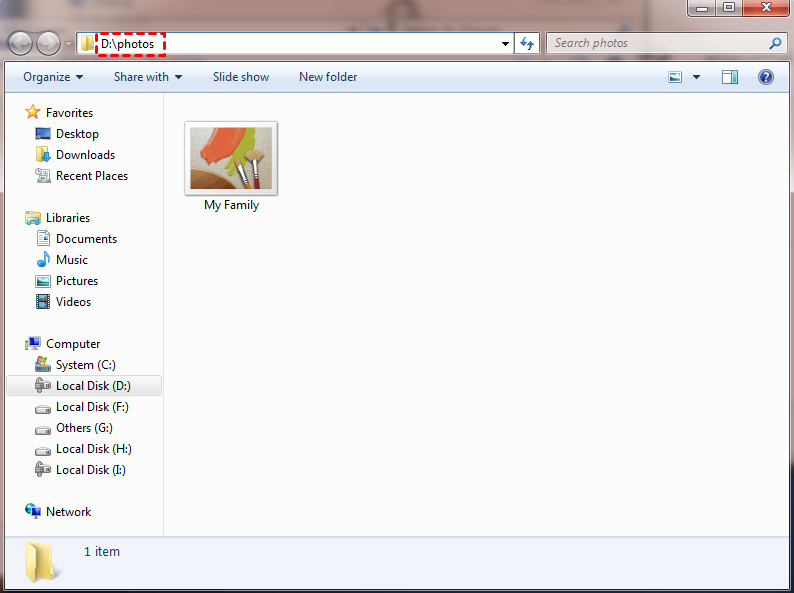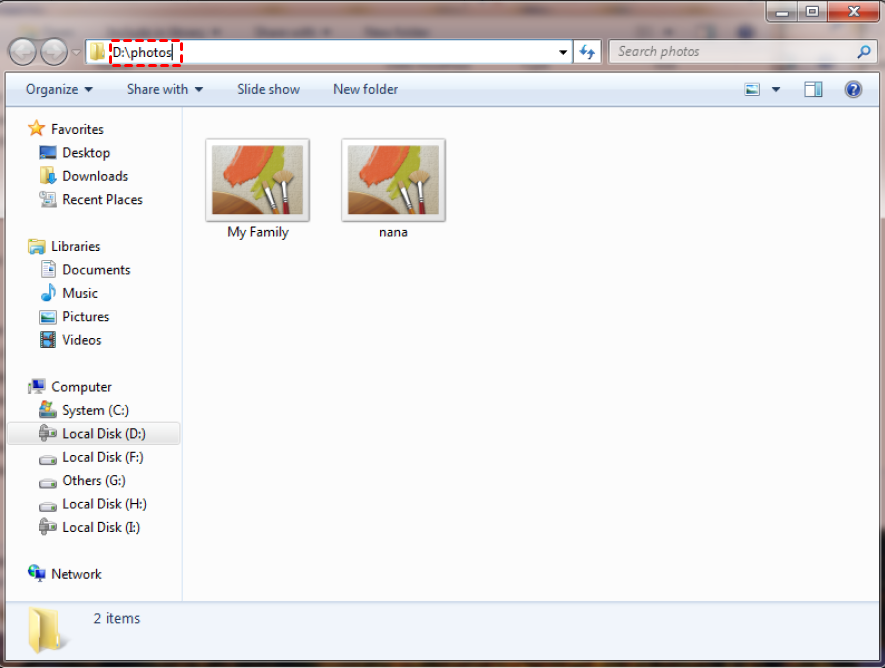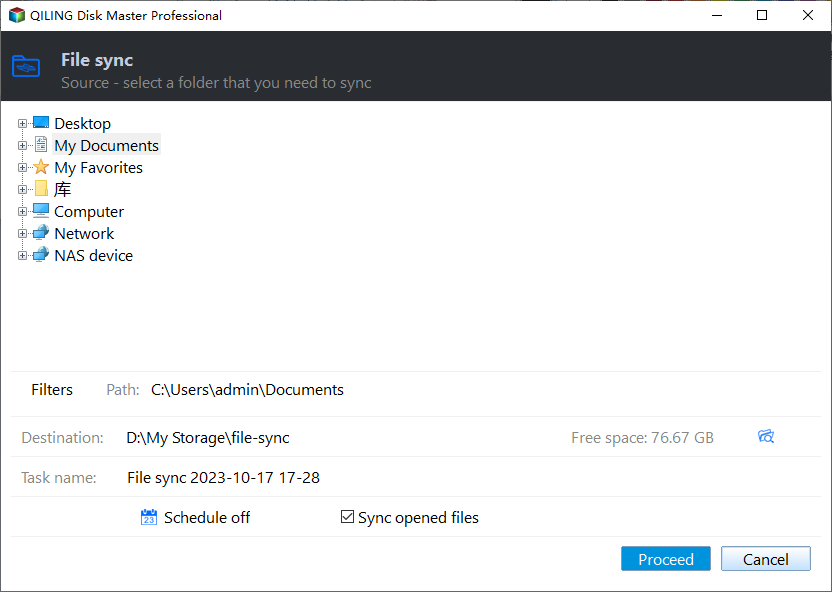How to Run Two-Way Sync with Qiling Disk Master
Quick Navigation:
- How to run Two-Way Sync in Windows 11/10/8/7 easily
- Prerequisites for two-way sync
- Detailed steps about how to do a two-way sync
- The Results of Two-way sync
- Before two-way sync
- After two-way sync:
- Sync Settings
- Schedule Sync
- Conclusion
The Two-Way Sync is a feature that synchronizes changes in both the source and target directories, including new, modified, or deleted files, ensuring that both directories are up-to-date with each other's changes when the Two-Way Sync task is run.
File two-way sync is used in various scenarios, such as syncing personal files across multiple devices, synchronizing work files between colleagues, and keeping a backup of important documents. It's also used for syncing media files, like music and videos, across different devices, and for syncing project files between team members.
Multi-device synchronization: File two-way sync allows you to access and edit files across multiple devices, keeping your files up-to-date and synchronized across all devices. This means you can work on a file on your computer and have the latest version accessible on your phone or tablet, and vice versa. This convenience enables you to stay productive and organized, regardless of which device you're using.
Team collaboration: File two-way sync is a useful tool for team collaboration, allowing team members to share files in a folder and sync changes in real-time, ensuring everyone has access to the most up-to-date version of files.
Backup and restore: File two-way sync can serve as a method of data backup by syncing files to other devices, ensuring backup copies are stored in a secure location, and allowing for file restoration in case of data loss or device failure.
Offline access: File two-way sync allows you to access files offline by syncing them to your device when you have a network connection. This way, you can still use the files even when you don't have internet.
How to run Two-Way Sync in Windows 11/10/8/7 easily
Prerequisites for two-way sync
To sync your files, download and install the paid file sync software Qiling Disk Master Professional on your computer.
And you need to create a file to sync.
Detailed steps about how to do a two-way sync
1. 1. Click the "Backup and recovery" tab.
2. The default task name is "File Sync" and can be customized. Clicking on "Folder" allows you to select the folder you want to sync.
3. Select a destination location to sync the folder to.
4. Click "Proceed" to launch the syncing process.
Tips:
- While sync is running, you can click an icon in the lower-left corner to set to Shut down/Restart/Hibernate/Sleep PC after sync completion.
- When the sync is running, you can also click on the underlined sentence to view the sync process in more detail.
5. Please wait for the sync process to complete, then click Finish.
6. The source folder's files are identical to the target folder's files, indicating that the comparison was successful.
The Results of Two-way sync
Before two-way sync
1) Source folder:
2) Target folder:
After two-way sync:
1) Source folder:
2) Target folder:
Tips:
- When running a Two-Way Sync, files with the same name but different sizes on both sides will result in the target files being overwritten.
- When running a Two-Way Sync, files with the same name but different modified dates on both sides will be overwritten by the versions with the newer modified dates.
- When you run the Two-Way Sync task again, it syncs added, changed, and deleted data between the source and destination directories.
Sync Settings
When creating a new Two-In the Way Sync task, you will find a "Options" button in the lower-left corner of the interface.
- Comments: "Task: [Task name] - Note to distinguish from other sync tasks"
- Email notification: In unattended operations, a notification can be sent via email with the outcome of each sync.
Command
In this option, you can set the pre-command and post-command.
Advanced
- Operation Priority: To prioritize the task, select the operation priority, with higher priority resulting in faster task execution speed.
- Others: If you need the same name as the Basic Task folder in the destination, you need to tick the box "Automatically create a folder with the same as the task in the target location" before creating the basic sync task. This option is unticked by default.
Schedule Sync
To sync files, select the "Schedule Sync" option, which will prompt a dialog box. From there, you can schedule a sync task to run at a desired frequency, such as daily, weekly, or monthly, and also choose from event triggers or USB plug-in as alternative sync methods.
Notes:
- Once two-way sync has been set up, please refrain from modifying the folder name of the source folder(s), as this can disrupt the sync process.
- For a new Two-If the source file name is the same as one of the previously synced destinations, the existing destination copy will be overwritten, with no option to keep a different version of the file using the same names.
- The maximum file path of Two-Way Sync is restricted by the Windows API to 256 characters, so please check and shorten folder names if necessary, and avoid folders with special characters in their names.
- Two-Way Sync supports VSS (Volume Shadow Copy Service), enabling synchronization of files in use by other programs, but requires the "Volume Shadow Copy" service to be enabled on the computer, and files exclusively in use by other programs will not be synchronized.
- If there are special system files or folders with specific security attributes in the source folders, they will not be synchronized and the program will ask you to skip them.
- If the target path is on a FAT/FAT 32 partition, files larger than 4 GB won't be synced because FAT/FAT 32 can't store files over 4 GB.
- The source folder and the target folder cannot be nested within each other.
- Neither the source folder nor the target folder can contain CD (compact disc) files.
Conclusion
The significance of File Two-Synchronization lies in ensuring seamless file backup and recovery, cross-platform work experience, smooth collaboration and sharing, improved work efficiency and flexibility, and automated file management processes, providing a convenient and efficient working environment where files stay synchronized across devices and platforms.
FAQs:
Q: Does Qiling Disk Master support real-time two-way synchronization?
A: Sorry, Qiling Disk Master doesn't support real-time two-way sync.
Q: How can I synchronize between two computers?
A: To set up a NAS on a target computer and sync files from a source computer, you can create a network-attached storage device on the target computer, then use software to synchronize files from the source computer to the target computer, allowing both devices to share and access the same files over the same local area network.
Related Articles
- Do You Know Any SyncToy Portable Alternative in Windows 7/8/10?
I need help to sync files or folders with the SyncToy portable alternative in Windows 7/8/10. Do you know any SyncToy replacement to sync files without losing data? - Top 3 Methods for Synology NAS Incremental Backup
This article tells you how to do Synology incremental backup with add-on tools like Hyper Backup or Glacier Backup or Qiling Disk Master for richer backup features. - Synology NAS Backup to External Hard Drive [2 Free Ways]
It is necessary to backup Synology NAS to external hard drive for data security and this article provides you with 2 safe and free ways. - Best Free Task Scheduler Alternative - Qiling Disk Master
If you are looking for a better Task Scheduler alternative, Qiling Disk Master Standard is worth trying. Read this article carefully and learn the operating steps below.
